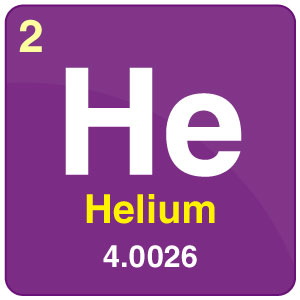Chemistry
Vocabulary [A to Z]
Part - 3 (101 to 150)
101. Group
atoms bound together as a unit forming part of a molecule
102. Halogen
any of five related nonmetallic elements (fluorine or chlorine or bromine or iodine or astatine) that are all monovalent and readily form negative ions
103. Heat
a form of energy transferred by a difference in temperature
104. Heterogeneous
consisting of elements not of the same kind or nature
105. Homogeneous
all of the same or similar kind or nature
106. Hydrate
any compound that contains water of crystallization
107. Hydrocarbon
an organic compound containing only carbon and hydrogen
108. Hydrogen Bond
a chemical bond consisting of a hydrogen atom between two electronegative atoms (e.g., oxygen or nitrogen) with one side be a covalent bond and the other being an ionic bond
109. Hypertonic
having a higher osmotic pressure than a comparison solution
110. Hypotonic
having a lower osmotic pressure than a comparison solution
111. Ideal Gas
a hypothetical gas with molecules of negligible size that exert no intermolecular forces
112. Immiscible
(chemistry, physics) incapable of mixing
113. Indicator
a substance that changes color to show something's presence
114. Inorganic Compound
any compound that does not contain carbon
115. Ion
a particle that is electrically charged positive or negative
116. Ionic
containing or involving electrically charged particles
117. Ionic Bond
a chemical bond between oppositely charged ions
118. Isomer
a compound that exists in forms having different arrangements of atoms but the same molecular weight
119. Isotonic
having the same or equal osmotic pressure
120. Isotope
atom with same atomic number, different number of neutrons
121. Kelvin
British physicist who invented the Kelvin scale of temperature and pioneered undersea telegraphy (1824-1907)
122. Kinetic Theory
(physics) a theory that gases consist of small particles in random motion
123. Lattice
an arrangement of points in a regular periodic pattern
124. Law Of Conservation Of Matter
a fundamental principle of classical physics that matter cannot be created or destroyed in an isolated system
125. Law Of Definite Proportions
(chemistry) law stating that every pure substance always contains the same elements combined in the same proportions by weight
126. Le Chatelier'S Principle
the principle that if any change is imposed on a system that is in equilibrium then the system tends to adjust to a new equilibrium counteracting the change
127. Liquid
fluid matter having no fixed shape but a fixed volume
128. Litmus Test
material that changes color in acidic or alkaline solutions
129. Luster
the property of something that shines with reflected light
130. Malleable
capable of being shaped or bent
131. Mass
the property of a body that causes it to have weight
132. Mass Number
the sum of the number of neutrons and protons in an atomic nucleus
133. Matter
that which has mass and occupies space
134. Melting Point
the temperature at which a solid turns into a liquid
135. Meniscus
the curved upper surface of a liquid in a vertical tube
136. Metal
a chemical element or alloy that is usually a shiny solid
137. Metallic Bond
a chemical bond in which electrons are shared over many nuclei and electronic conduction occurs
138. Metalloid
of or being a nonmetallic element that has some of the properties of metal
139. Miscible
capable of being mixed, in chemistry
140. Mixture
a substance consisting of substances blended together
141. Molarity
concentration measured by molecular weight of a substance
142. Mole
the molecular mass of a substance expressed in grams
143. Molecule
the simplest structural unit of an element or compound
144. Monatomic
of or relating to an element consisting of a single atom
145. Neutral
having only a limited ability to react chemically
146. Neutralization Reaction
a chemical reaction in which an acid and a base interact with the formation of a salt; with strong acids and bases the essential reaction is the combination of hydrogen ions with hydroxyl ions to form water
147. Neutron
a subatomic particle with zero charge
148. Noble Gas
any of the chemically inert gaseous elements of the helium group in the periodic table
149. Nonpolar
not ionic
150. Nucleus
the positively charged dense center of an atom

No comments:
Post a Comment